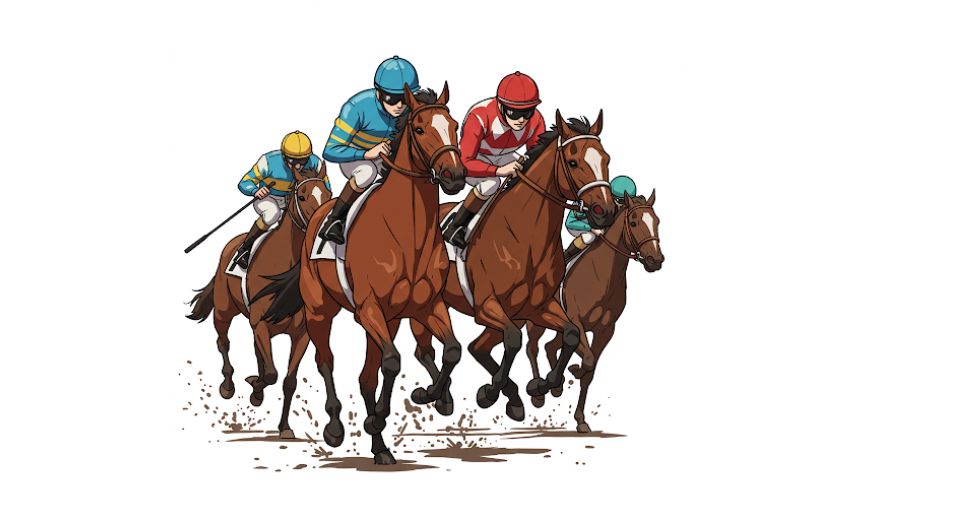
May 09, 2025

Observations gathered and presented by Metastat Insight have shed particular light on the dominant direction and subtle shift occurring across the Global Horse Racing market, showing how change and tradition have created a shared beat within this centuries-old sport. Rooted in centuries of cultural importance, horse racing has retained a unique place in both professional and social life. Despite the traditions upon which it is based, the market has continued to redefine how it positions itself within relation to contemporary audience behaviors, commercial drivers, and regulatory climates. The tension working in reverence for heritage while navigating its way through contemporary paradigms has established a journey that is distinctly its own.
From continent to continent, race tracks continue to draw tourists, investors, breeders, and spectators, each one in its own degree helping keep horse racing on the map around the globe. Either by the glitz of flat racing meet competitions or by the rough roads of steeplechase tracks, the sport has a combination of competition and entertainment that appeals trans-generationally and regionally. What is remarkable in the modern context is how the Global Horse Racing market has managed to adapt to various formats and cultural expectations without diluting its core. Rather than being restricted by homogeneity, the sport has local flavor in presentation and involvement, with several options for participation.
The commercial aspect of horse racing has witnessed tremendous transformation in the way it organizes, delivers, and finances its product. Ownership models have evolved, and with this evolution has come increased emphasis on sustainability, health procedures, and long-term planning. Breeding programs, training operations, and track management have all adapted to a wider awareness about animal well-being, logistics, and efficiency of resources. This retooling, though subtle and incremental, has fashioned a marketplace that is more aware of its social footprint but still founded upon competition, pedigree, and performance.
Computer infrastructure increasingly impacts the way the Global Horse Racing market interacts with its broader surroundings. From fan participation to management of betting and race-day operations, technology is now an invisible but essential partner in the process. Its integration has not necessarily changed the character of the sport but has altered how people experience it. Virtual fans, internet betting, and global television broadcasts have increased access while requiring careful calibration to maintain the integrity and cadence of race-day routine. This union of tradition with convenience has expanded the market's reach without jeopardizing its intrinsic values.
Behind the scenes, the equine racing stakeholder network keeps on showing strength and reinvention. Trainers, jockeys, breeders, syndicate proprietors, and ground personnel each have jobs which are deeply rooted in competence and custom. All their work is largely out of public view but essential in supporting the precision and pomp of racing. Despite changes in external conditions, these jobs have not been erased; rather, they've been reconfigured by new tools, improved information, and shifting expectations. The Global Horse Racing industry has proven that growth does not necessarily require broad change, but can evolve through a steady accumulation of small, worthwhile enhancements.
Geographically, the contours of involvement and interest continue to be wide-ranging. While there are some nations renowned for traditional circuits and big-name events, others are emerging with tracks that blend ambition with innovation. The construction of new circuits, the modernization of older facilities, and the improvement of training grounds all reflect a broader desire to make the sport competitive and relevant in the face of many entertainment choices. These investments reinforce a more long-term strategy—one of longevity and adaptability in place of swift profit. Once-marginal markets are now integral to the overall story, compelling historic districts to adapt accordingly. Horse racing's cultural value continues to evolve on public and private fronts.
To some, it is a spectacle to be seen at in nice attire at big tracks; to others, it is a social event that brings people together under a common heritage and regard for the animals being used. This malleability of experience allows the Global Horse Racing market to have a special level of inclusivity across economic, cultural, and generational lines. It occupies a space where nostalgia and novelty don't have to struggle with one another, blessed with a system of markets that silently shifts backstage. Sponsorship, media deals, and hospitality are all becoming more tailored to the tacit needs of formal and recreational players.
Personalization has become a silent but influential element of the experience, ensuring attendees, viewers, and stakeholders engage with a personalized and significant level of connection. While not necessarily always evident up front, such changes in the background have increasingly built on top of how the market functions—creating more possibilities while retaining the special atmosphere of horse racing. As told by the diligent research in the Global Horse Racing market Report released by Metastat Insight, this industry continues to develop its heritage by embracing practical adjustment instead of revolutionary disruption. With each race day, training session, and breeding season, the market keeps on showing its ability to grow on the back of respect for tradition. The balance it attains of familiarity and utilitysees horse racing not just as an activity, but a global pastime with timeless appeal.
Drop us an email at:
Call us on:
+1 214 613 5758
+91 73850 57479